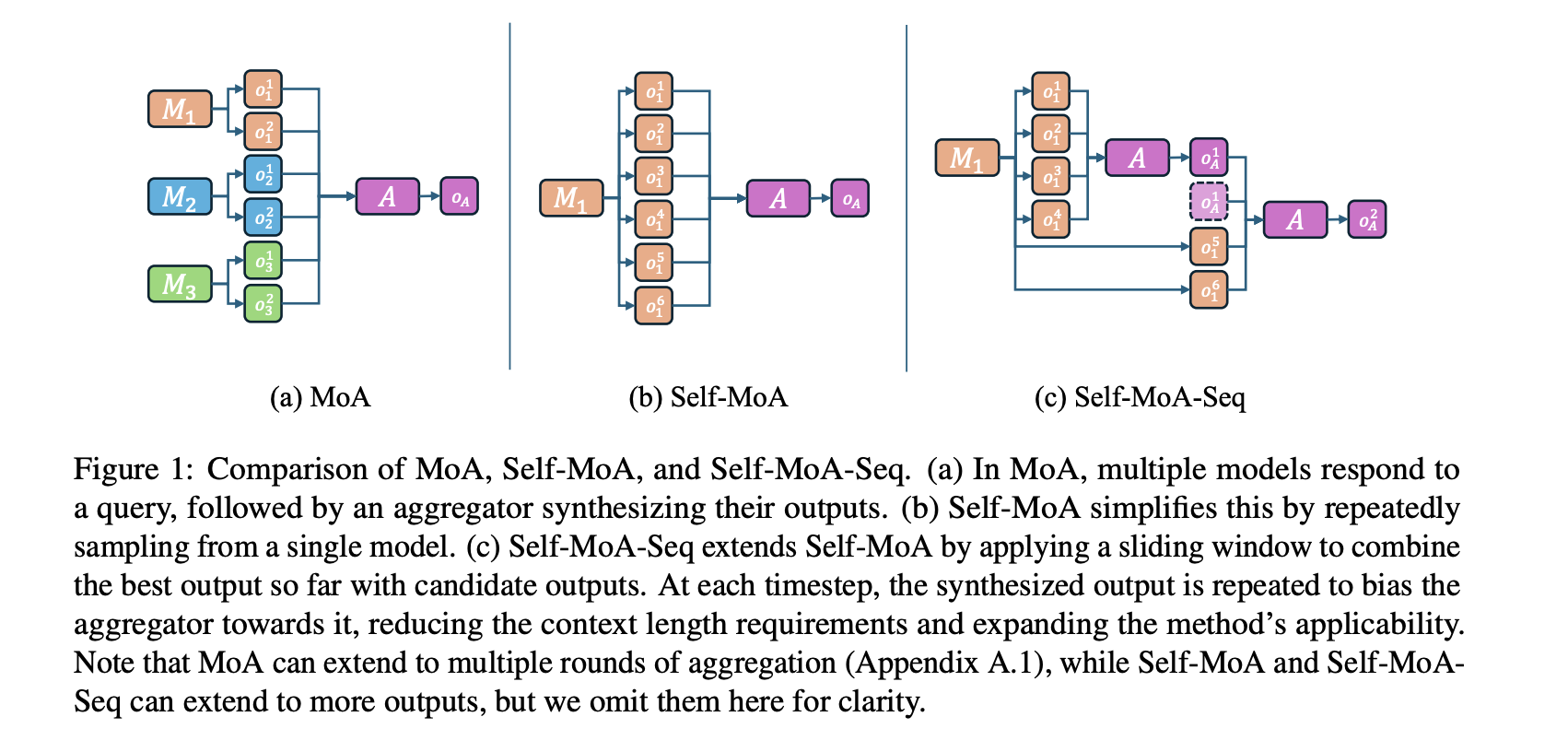
Understanding Self-MoA and Its Benefits
Large Language Models (LLMs) like GPT, Gemini, and Claude are designed to generate impressive responses. However, making them work efficiently can be costly as their size increases. Ongoing research focuses on ways to enhance their performance while reducing computational demands.
Key Advantages of Self-MoA
One effective method to enhance LLM performance is through a technique called ensembling. This involves combining outputs from multiple models. A specific ensembling method called Mixture-of-Agents (MoA) merges responses from various LLMs to create a high-quality answer. However, this approach can compromise quality by including less effective responses.
Researchers from Princeton University developed Self-MoA, a new method that aggregates multiple outputs from a single, high-quality model. Unlike traditional MoA, which combines different LLMs, Self-MoA focuses on producing diverse outputs from one model, ensuring that only high-quality responses shape the final answer.
How Self-MoA Works
Self-MoA generates several responses from an excellent model and builds the final output from them. This eliminates the need for lower-quality models, leading to superior response quality. Additionally, a variation called Self-MoA-Seq processes responses sequentially, allowing for efficient output aggregation even with limited computing resources. It uses a sliding window approach, benefiting LLMs with shorter context lengths.
Proven Results
Tests show that Self-MoA greatly surpasses Mixed-MoA across various benchmarks. In AlpacaEval 2.0, it achieved a 6.6% improvement over traditional methods. Furthermore, it consistently performed better across other datasets like MMLU, CRUX, and MATH.
Self-MoA’s effectiveness validates a critical finding: the quality of the proposing model significantly impacts performance. The research demonstrates that better results come from using a single high-quality model rather than mixing different models.
Why This Matters for Your Business
Understanding and applying Self-MoA can transform how your company uses AI. Here’s how to leverage AI effectively:
- Identify Automation Opportunities: Find key areas where AI can improve customer interactions.
- Define KPIs: Set measurable goals for your AI initiatives to ensure they impact business positively.
- Select an AI Solution: Choose tools that fit your specific needs and allow customization.
- Implement Gradually: Start small with pilot programs, gather insights, and scale usage carefully.
For more information on managing AI KPIs, contact us at hello@itinai.com. Follow us on Telegram or @itinaicom for ongoing insights.
Explore how AI can enhance your sales and customer engagement processes. Visit us at itinai.com.



























